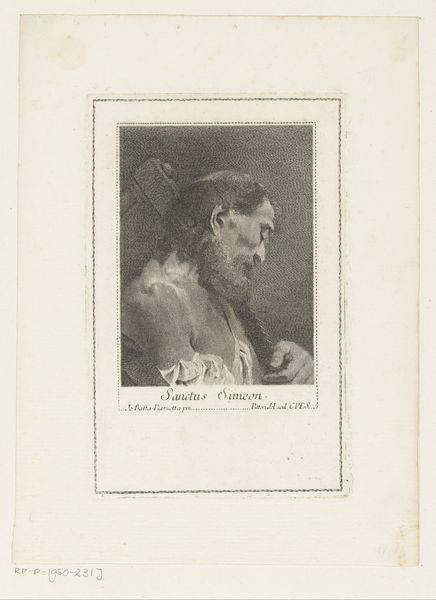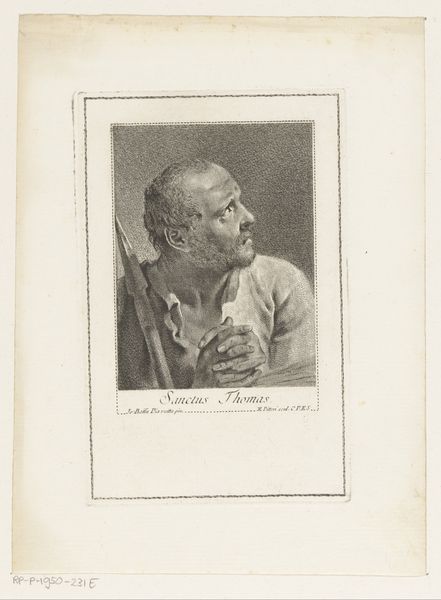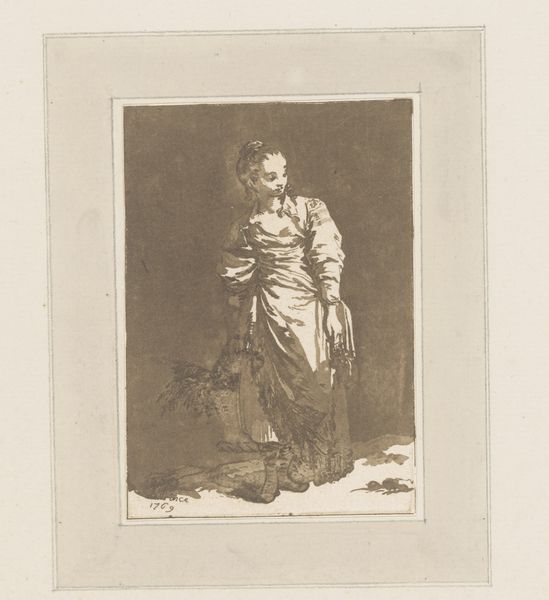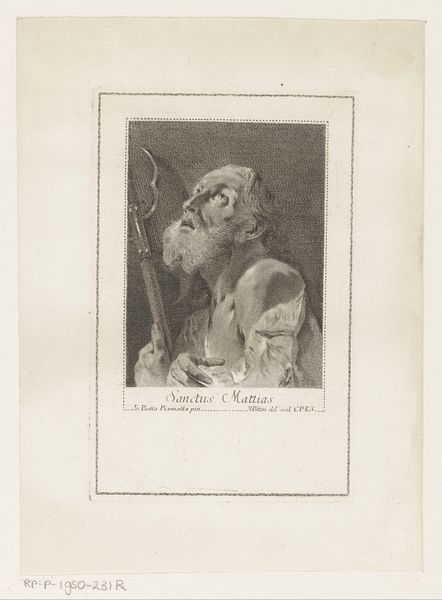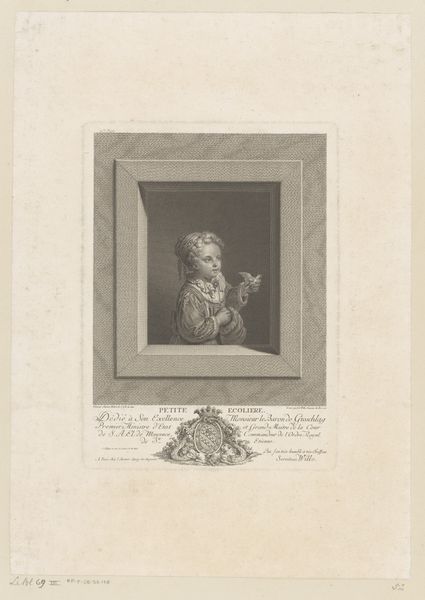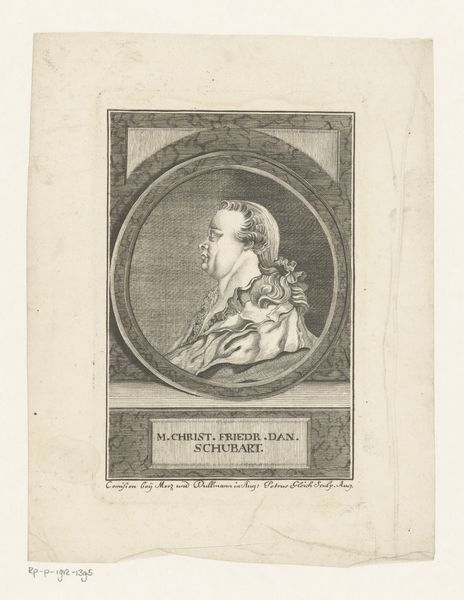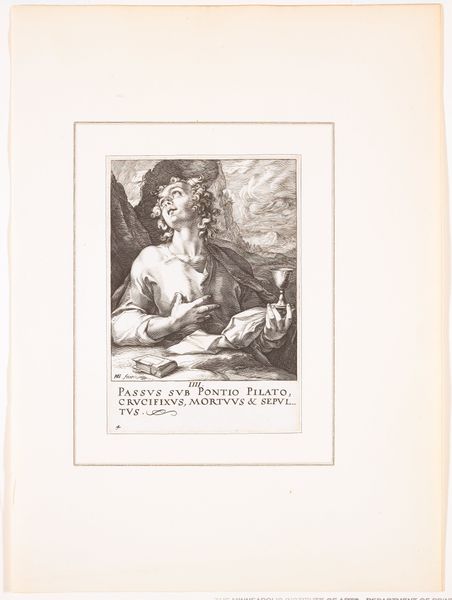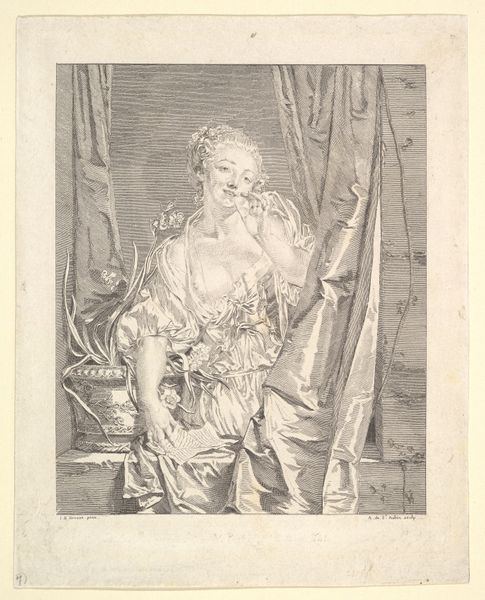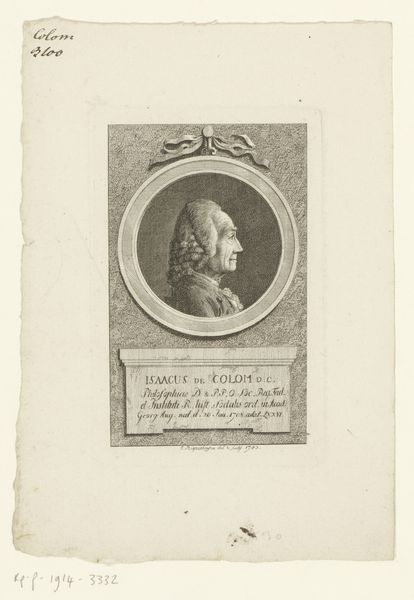
print, engraving
#
portrait
#
baroque
# print
#
old engraving style
#
figuration
#
history-painting
#
academic-art
#
engraving
Dimensions: height 160 mm, width 102 mm
Copyright: Rijks Museum: Open Domain
Curator: Oh, he's seen things, hasn't he? Look at that upward gaze, that wispy beard...it speaks of a soul seasoned by time, touched by a quiet, enduring faith. Editor: Indeed. We're looking at "Apostel Bartolomeüs," an engraving created sometime between 1712 and 1786 by Giovanni Marco Pitteri. The print captures the apostle's image, specifically referencing the account of his martyrdom, holding in his right hand the instrument that, in the religious literature, led to his demise. Curator: That knife… the weight of it seems almost palpable. It adds such a sharp tension to his otherwise serene expression. Does anyone else see a sort of profound sadness there, etched in the lines around his eyes? A sense of foreboding, maybe? Editor: I think we must be attentive to the colonial dimensions, in considering any religious figure from this time and artistic style. Bartholomäus, or Bartholomew, in his apostolic function of "bringing" the Gospel to far away communities participated in some of the mechanisms of oppression and the erasure of indigenous spiritualties, not to undermine his figure. Also, in terms of gender representation, there are many interpretations that should be explored in relationship to the hypermasculinized figure of the apostle as seen by baroque lenses. Curator: Right, this is interesting, you almost never imagine someone considering baroque aesthetics in these theoretical parameters, I understand what you mean, it resonates for me with the way his figure has this inherent imposition due to his inherent whiteness and dominant figure in Christian European history and society. His stare and figure demands presence without necessarily generating a fraternal sensation to me as a spectator. It also contrasts with what the literature would describe as his alleged soft traits. What would the other Apostles and Jesus felt, when seeing this man walking between them. That is precisely what a work of art like this make me wander to ask. Editor: That sense of imposing gaze makes us confront, to our days, questions about cultural and ideological authority. We need to discuss it even if these works' artistic values cannot be overlooked, or dismissed because it would be detrimental. Curator: So true. I suppose that’s the point, isn’t it? Great art provokes, stirs, and makes us look inward, even when it depicts the most outwardly pious figures. Editor: Precisely, art as an entrypoint, even if that entry opens us to questions that destabilize any alleged aesthetic of harmony or divinity.
Comments
No comments
Be the first to comment and join the conversation on the ultimate creative platform.
